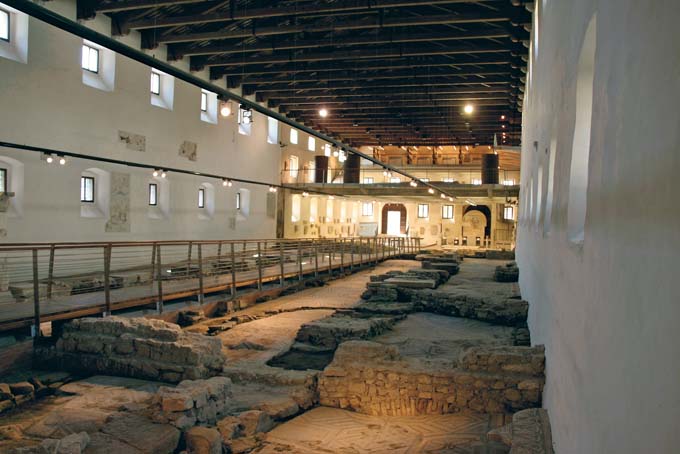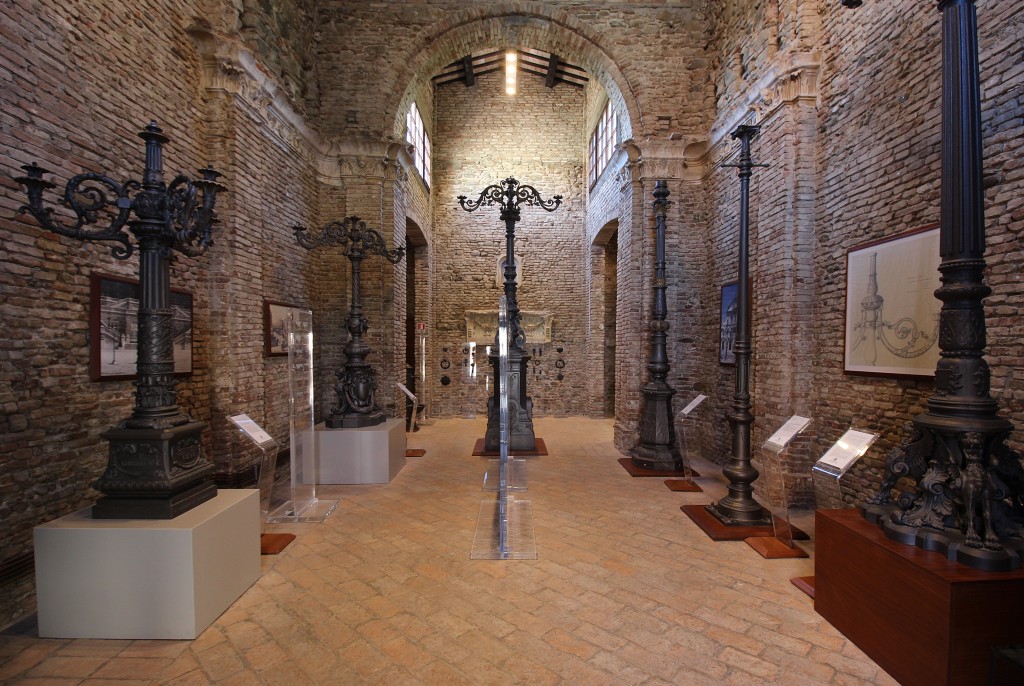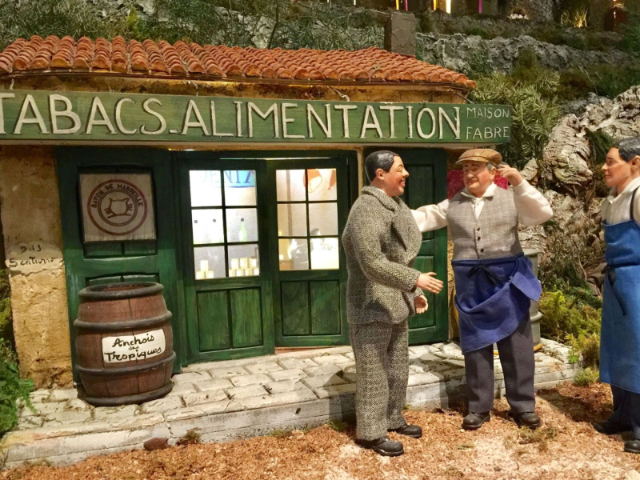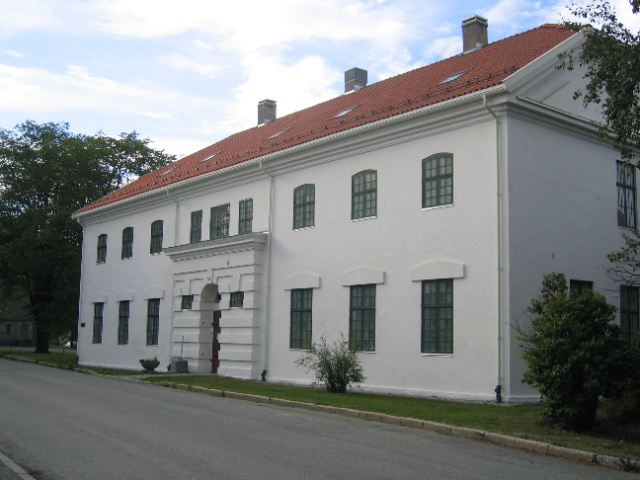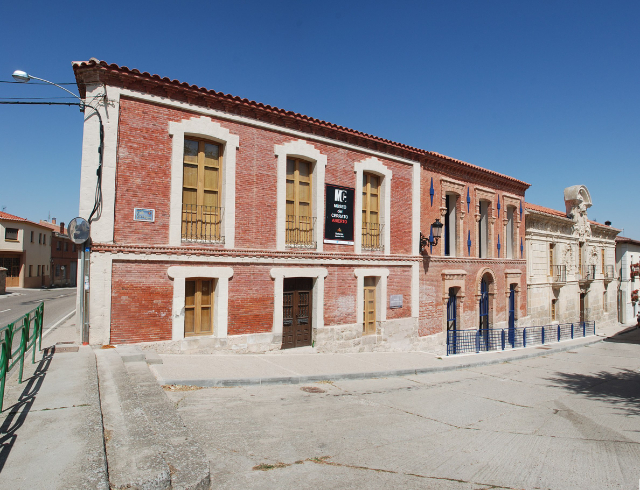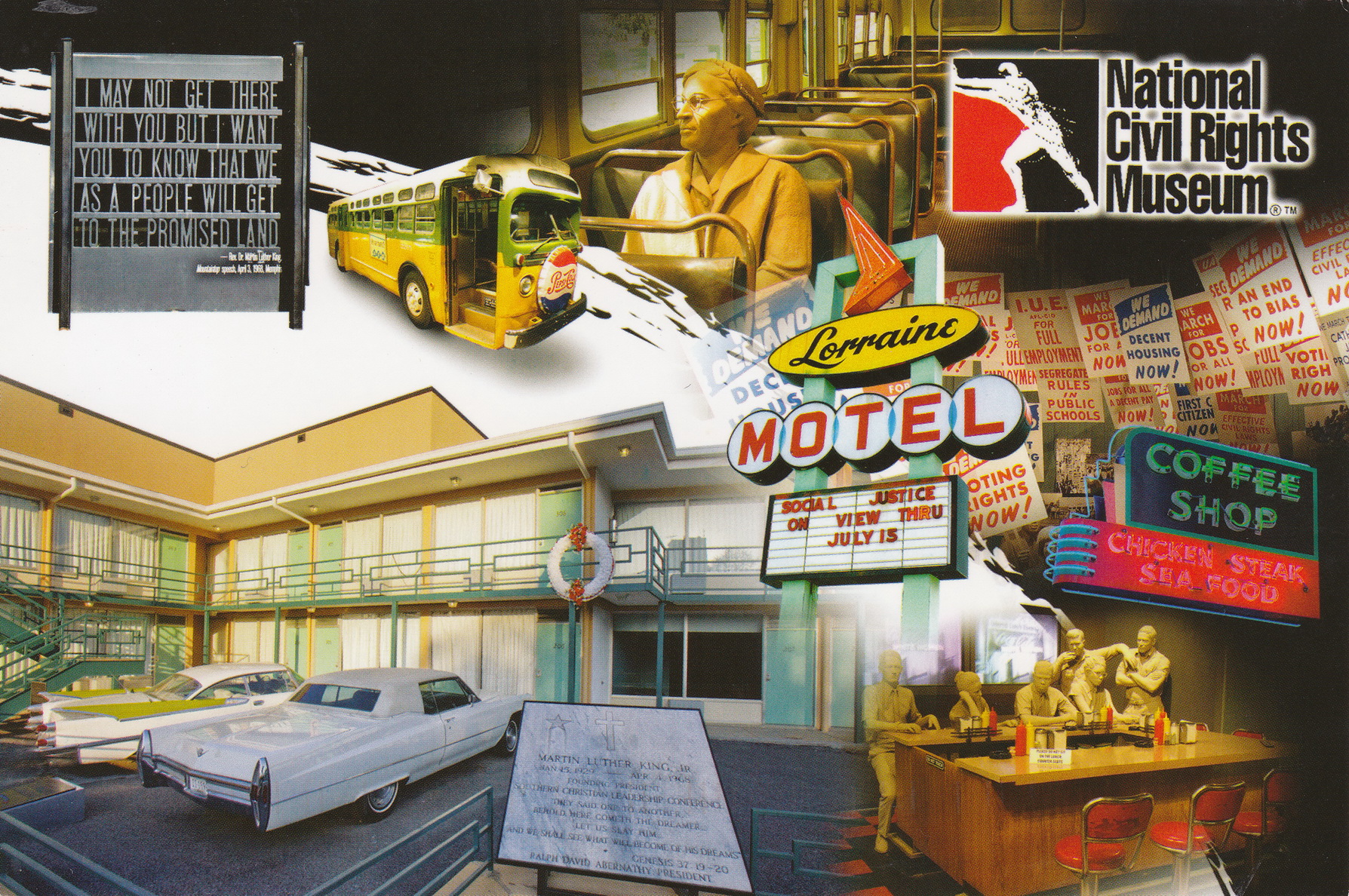The Early Christian Museum is a unique collection of late antique artefacts that tell the story of Christianity at the origins of the Upper Adriatic site. The finds are kept in a real treasure chest: a majestic agricultural building built on the remains of an early Christian basilica from the 4th century.
The Museum was inaugurated in 1961, separating from the National Archaeological Museum the remains of the early Christian community of Aquileia, and was named after Franco Marinotti, a patron who had contributed to the recovery of the building that houses it. It was built as an early Christian church, on the north-eastern outskirts of the city, to be transformed into a Benedictine monastery; from the end of the eighteenth century it passed into the property of various families in Aquileia, to be used as a residence ("Palazzo"), home to private collections of antiquities and finally for agricultural use.
The ground floor is almost entirely occupied by the mosaic floor with geometric design of the primitive basilica and other mosaic fragments of late antique buildings in Aquileia, while the first floor preserves parts of the floor of the basilica of the Fondo Tullio alla Beligna (excavated in the southern area of the ancient city).
On the second floor are the early Christian inscriptions, mostly funerary, some also decorated, which give a picture of the composite society of Aquileia at the time (IV-V century AD); they are flanked by sculptural finds dating back to the early Middle Ages, in part already reused in later phases of the building.
